With frequent protests taking place throughout the subway lines since Dec. 3, 2021, it has come to the attention of many that people with disabilities are being left behind in various areas of technical advancement in transportation. Likewise, whether the elderly population can adjust to the new digital systems becoming staples in our world at the same speed as everyone else is a key question we still must answer as we begin to approach a new digital era at a rapid pace.
To understand the issues in mobility rights of people with disabilities and the elderly population’s use of digital service systems, Ewha Voice conducted interviews with a range of specialists and activists.
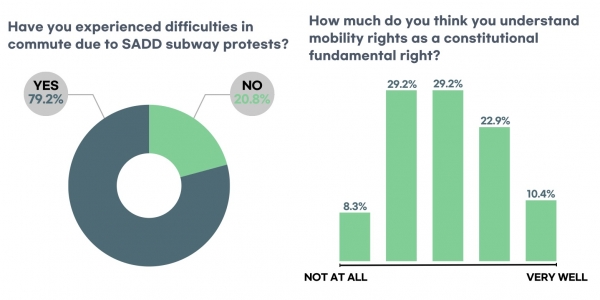
SADD mobility right protest: South Korea’s current situation
Formed in 2007 to ensure mobility rights and uphold the Disability Discrimination Act for people with disabilities, Solidarity Against Disability Discrimination (SADD) has been holding subway protests in Seoul since 2021. Although the protest’s aim has been to ensure the basic rights of people with disabilities, the demonstrations have impacted many citizens and have therefore become the subject of controversy.
To learn the details about the continuous subway protests, Ewha Voice met Sung Ga-yeon from SADD Office of Planning.
According to Sung, SADD is acting based on the main agenda, Against Aktion T4, in which T4 refers to the Nazis’ program of genocide against people with disabilities. The association insists that due to the lack of attention and budget for basic rights from South Korea’s Ministry of Strategy and Finance, many people with disabilities are isolated in their homes or facilities and unable to take part in society.
The protests at subway stations, which usually take place on the main subway lines of Seoul, are also part of SADD’s Against Aktion T4 movement. Eight to ten wheelchairs get on and off of the trains one after another, leading to train delays during rush hours.
Through the almost-yearlong protests, SADD has brought about reforms to the “Act On Promotion Of The Transportation Convenience Of Mobility Disadvantaged Persons” and introduced the new rule of low-floor buses replacing every bus retired from service as of 2022. Despite the goals that have been fulfilled, SADD continues its protests for the introduction of additional acts related to disabled rights, which include the issue of deinstitutionalization and employment.
Sung also commented on South Korea’s current situation with regard to discrimination towards people with disabilities.
“OECD’s Social Expenditure Database shows that South Korea ranks the lowest in expenditure for people with disabilities, which means that the social position of these people is also the lowest,” Sung stated. “People do not realize that a large amount of expenditure is required for the basic rights of people with disabilities to be guaranteed, and the issue had not been one of interest before the subway protests began to directly disturb the ‘normal’ citizens’ lives.”
“We are working towards a society where the rights of all human beings are not guaranteed with ‘work’ or ‘protest’ but out of necessity,” Sung emphasized. “For this to happen, not only the social structure but also the people’s way of thinking needs to change.”
Despite SADD’s opinion on changes to ways of thinking, it may not be a simple issue according to a survey conducted by Ewha Voice from Oct. 20 to 29. Among 120 people in their twenties, 79.2 percent of the respondents experienced inconvenience in commuting hours due to the SADD subway protests, and 95.8 percent of the respondents have thought about the purpose and method of the protests.
However, when asked about the actual level of understanding about the subway protests, 48 percent of the respondents replied that they had a high level of understanding, with 37.5 and 14.6 percent reporting that they had moderate and low levels of understanding, respectively. The results showed that respondents had lower levels of understanding on mobility rights as constitutional fundamental rights, with 37.5 and 29.2 percent showing low and moderate levels of understanding, and only 33.3 percent indicating that they had a high level of understanding about the subject.
Anonymous comments related to the issue showed the respondents’ further varied opinions. One noted, “It is difficult to support a protest that brings so much inconvenience.” Another said, “I don’t know whether I should support or argue against the protest as SADD’s goals are not clearly presented to citizens.” A further comment mentioned, “The severity of the protest shows the level of neglect people with disabilities in Korea is experiencing.”
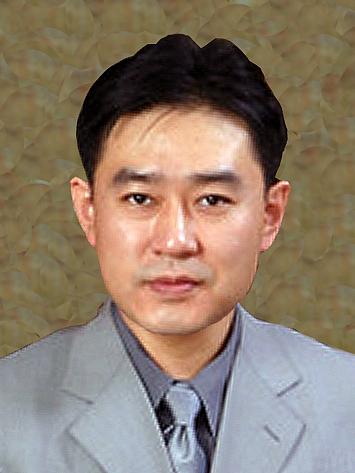
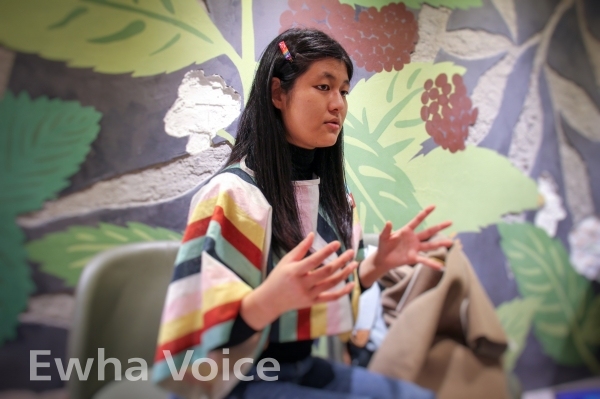
Efforts being made: From able-bodied to disabled
Professor Park Chang-suk from Catholic Kwandong University shared his opinions on SADD protests and his experience on researching disability legislations.
Park, a Doctor of Laws with 17 years of university teaching experience, suffered a cerebral hemorrhage five years ago causing his current left-sided hemiplegia. After experiencing the difficulties of people with disabilities first-hand, he decided to work to establish a theoretical basis for disability legislations. Park especially learnt the significance of mobility in maintaining a job and consequently a “normal” life, which made him study and research mobility rights of people with disabilities.
When asked about the SADD subway protests, Park replied that the organization’s form of protest may be too radical.
“It is difficult to take in movements that disrespect others’ rights to secure one’s own. I think the protests are in a way, too extreme,” Park commented. “I believe what SADD is trying to emphasize through their protests is their desperation. Without making such social issues, it is difficult to obtain sufficient attention to achieve their goals.”
Park remarked that although there are many more acts needed to protect the people with disabilities, including the various acts that SADD is currently requesting, it is difficult for all the requirements to be accepted at once. For a new legislation to be enacted, complicated procedures and interests should be considered, and the nation and society is not yet ready for these changes.
However, Park predicted a bright future in South Korea’s realization and consideration for people with disabilities.
“What decides the degree of protection of disability rights is not only the policies and laws but also the level of mature civic awareness,” Park said. “Although our country is known to traditionally have a lack of attention towards others, I actually feel that the social awareness towards people with disabilities is maturing day by day.”
“I understand it is sometimes difficult to put yourself in the shoes of people with disabilities as it is something you have never actually experienced,” Park said. “However, 73.3 percent of South Korea’s disabled population have acquired their disabilities, meaning that we all are ‘potentially’ disabled. Taking in each other’s differences and being more considerate towards those with difficulties will help the society to advance towards a better future.”
A significant contribution to achieving such a future comes out of student groups like Ewha Movement. Yun Yeon-jae, a junior majoring in philosophy, and leader of Ewha Movement, explained her club’s involvement in promoting mobility rights of people with disabilities and shared her thoughts on the issue.
Ewha Movement is a social science club at Ewha Womans University that holds regular bi-weekly seminars on current issues and takes part in protests both in and outside of the school.
Yun said that the issue of mobility rights of people with physical disabilities was raised in one of the club’s recent seminars, which dealt with Kim Do-hyun’s famous book “Challenge of Disability Studies.” She also mentioned that seniors from her club had taken part in SADD’s protest for mobility rights a few years ago.
“One of the most memorable remarks from the club’s former leader was that protests by people with disabilities are the most violent and self-disparaging,” Yun recollected. “I also remember a quote from a recent documentary, which said, ‘Nobody listens to me if I am a kind disabled person. For my words to even be heard, I must be mean.’”
From such inspiring quotes, Yun realized the unfairness of the current social structure, in which it is difficult for people with disabilities to raise their voices even in wrongful and unjust situations. Therefore, she believes that the subway protests have inevitably become violent so that the voices of people with disabilities could be heard.
“I want to remind the able-bodied citizens that the enlargement of one group’s rights does not mean the decline of another’s. Guaranteeing basic rights, including mobility rights, of people with disabilities means the rights of all citizens are protected,” remarked Yun. “For the people with disabilities, I want to encourage them to persevere as I believe there will be a bright future with people and the society as a whole eventually opening up to minority rights.”
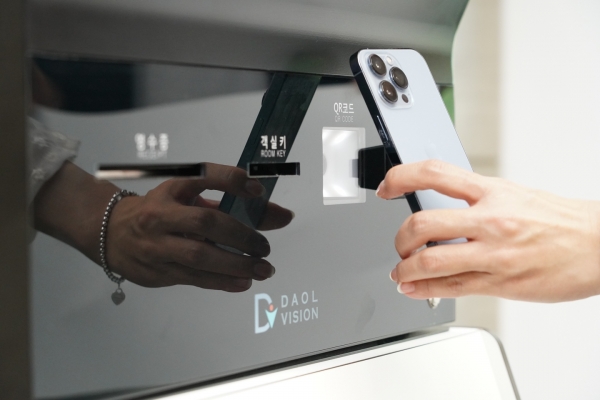
The digitally underprivileged: Whose convenience does the digital era support?
When fast food restaurants and franchise cafés first introduced digital kiosks as an alternative to in-person interactions, the change was perceived as a revolutionary convenience for businesses and consumers alike. In the aftermath of COVID-19, even public services such as transportation and healthcare have been on the pathway to converting to digital systems, with the avoidance of face-to-face contact becoming somewhat of a norm.
Although this may seem efficient and convenient to those who are familiar with digital platforms, many fail to notice those being left behind as the world moves forward into this new era.
Jun Sunmin, the deputy general manager of kiosk manufacturer Daol Vision, expressed that the shift from in-person services to digital platforms such as kiosks is essentially inevitable, especially after the impact of COVID-19.
Daol Vision is a kiosk software development and manufacturing company established in 1999 that mainly targets the tourism market. They have been working to create unmanned service programs in hotels and resorts, including various kiosks, that facilitate self-check-in and check-out amongst other conveniences.
Jun confirmed that the pandemic has resulted in a major workforce shortage in many industries, especially the tourism sector. Many have left the workforce but are unwilling to return even as we near a post-pandemic era. This can only mean a sharp increase in demand for other methods of efficient management in the various industries, such as digital kiosks.
Another reason companies prefer kiosks over actual employees is that in businesses such as hotels, where someone must manage the counter 24 hours a day, the night shift and overtime paychecks are too much for the employers to bear.
“Kiosks cannot help but be viewed as a more viable, efficient option because they simply have to be installed and powered on 24 hours a day,” Jun said. “Their working hours are unlimited, and the services they provide are highly flexible to adjust to the inflow of customers.”
She mused that this unavoidable transition that COVID-19 initiated has made employers realize the sheer efficiency and cost-effectiveness kiosks can introduce to their businesses, which marks a turning point in all industries because now no one is willing to convert back to the old ways.
“The recognition that kiosks are more efficient and convenient to use is no longer limited to the business owners but has spread to customers as well,” Jun noted. “This means the online, non-face-to-face services are no longer just an option but something all consumers might be required to adjust to in order to utilize public services.”
Despite these rapid changes enhancing convenience, the elderly population is unable to keep up with the rest of the world in the digital era.
Hur Junsoo, a professor from the School of Social Welfare at Soongsil University, explained that the exclusion of the elderly from online conveniences is due to a combination of societal factors.
Hur pointed out that despite the present global shift toward a digital society, the elderly population has spent the majority of their lifetime in an analog society. It may seem natural to younger generations to utilize smartphone apps or kiosks for their convenience because these are what they have grown up with from a young age, but the same cannot be said for elderly people, who need additional time to learn how to use online systems and digital devices after discarding their previous analog methods.
Hur agreed with the notion that the increasing minimum wage and job shortages combined with the consumers’ post-COVID-19 preference for online services is the main reason for the rapid conversion from person-to-person services to unmanned kiosks.
“This is a more serious issue than we may think because it is no longer limited to leisure services such as restaurants or movie theaters anymore,” Hur warned. “Even what we may consider the simplest everyday things, many elderly people find difficult. For example, because the taxi applications offered on smartphones are too complicated to operate, elderly people end up going onto the streets themselves to catch a ride, which itself is difficult because most of the cabs have already been reserved via the applications.”
Hur also expressed his concern that although the government has increased financial and institutional efforts to aid the elderly population in learning the operation of online and digital services, it is inefficient and nowhere near enough.
Because these digital learning programs are voluntary and not very well advertised, the actual percentage of elderly people who sign up is negligible. Also, the majority of the applicants tend to be people who are highly financially stable and have the time to spare.
Meanwhile, Hur stressed that the segment of the elderly population that is economically or physically disadvantaged has been excluded from digital learning opportunities, which creates an even greater divide within the already-prominent gap of digital competency.
“If we are unable to find a way to bridge the gap within our community to match the speed of digital transformation, it may create a permanent social divide nearly impossible to overcome.”
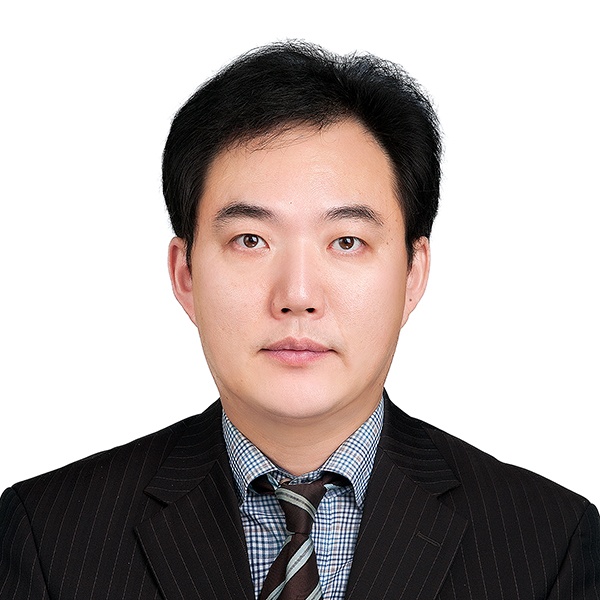
Navigating the new era with all generations: Overcoming the digital age gap
Jun Sunmin of Daol Vision conceded that many aspects of inclusivity in terms of age or physical capabilities are often not sufficiently taken into consideration in the digital industry.
However, she noted that because inclusivity is now a prominent factor in the evaluation criterion for service industries, many of them are opting to use kiosks that embrace all users, regardless of their digital capabilities.
To meet this new demand for inclusivity, Daol Vision has been making several additions and adjustments to their products.
The first was to make displays easier to use in terms of the positioning of icons and the enlargement of font size. Jun added that simplifying the interface is a critical factor in lowering the digital barrier for elderly people and others who are not familiar with unmanned kiosks.
Jun also emphasized the importance of the ability of kiosks to also accept cash as a form of payment, because many elderly people are not yet accustomed to other methods such as credit or debit cards and app-based payment services such as Samsung Pay or Kakao Pay.
Another factor put into consideration was kiosk height, which should not be fixed but adjustable for people in wheelchairs or seniors who experience discomfort standing for long periods.
As someone who has been in the tourism industry for more than 10 years, Jun admitted that when she had first told her friends she was moving to an IT development company, everyone was shocked and puzzled. However, she pointed out that now, there is no clear division between the service and IT industries.
Today, kiosks take on the role of the simple, administrative services, while human employees can efficiently focus more on the details and the emotional aspects of the customers that digital systems cannot effectively attend to.
“Digital service programs have become staples in our everyday lives, so it is critical that all people are able to use them without barriers,” Jun emphasized. “It is a challenge that we, as technological developers, need to overcome in order to achieve digital harmony in these rapidly changing times.”
From a national perspective, Professor Hur Junsoo expressed the need for a more effective way to help the elderly use kiosks and other digital devices.
Hur suggested a nationwide informatization status survey to be conducted by official organizations specializing in these issues, such as the National Information Society Agency (NIA), in order to accurately assess the population in need of assistance in digital education.
“So far, for the most part, regional senior welfare centers have independently dealt with the issue of the digital alienation of the elderly,” Hur commented. “I think it is now time to step it up to a national level, with the reins held by a stronger governmental agency.”
Hur also called upon the central and local governments in Korea to reassess the adequate financial, administrative, and human resources needed to effectively aid the currently growing elderly population. In this process, he mentioned the possible need for a new, centralized governmental branch to specialize solely in the area of reeducation for the marginalized class in terms of informatization and digitalization.
He expressed that it may be a more doable task than many think because Korea already has a high rate of smartphone proliferation even amongst the elderly. The problem that needs to be addressed, however, is teaching them how to utilize their devices beyond the basic call function, Kakao Talk, and YouTube, in order to aid their daily convenience.
Additionally, Hur added that alongside the elderly, families of lower income as well as the people with physical or mental disabilities are also largely excluded from the new shift towards an information society.
This is mainly because South Korea is not a universal welfare state that provides social welfare to all, but leans towards selective welfare that minimally aids only those situated within the boundaries of absolute poverty. Hur noted that perhaps it is time we create new laws and legislature to effectively offer welfare policies for marginalized people who have been overlooked by the current system.
However, this issue is not something that can be solely resolved by governments and social policies.
Hur highlighted the essential roles the younger generations, university students included, can play in aiding the digitally underprivileged in today’s society. Using the conveniences digital platforms offer, those who are able to easily access online platforms should utilize them to aid those who cannot effectively do so.
For example, Hur pointed out the various humanitarian projects currently being carried out through Zoom and other online platforms, including video-call language classes for foreign immigrants, or regular calls to check in on the elderly residents living alone. Because the Internet takes away the barriers between countries and languages, this method of social welfare can even be conducted internationally.
“What is crucial is that the younger generation realize that this issue is not limited to the elderly population alone,” Hur explained. “This has to start from the realization that this is not simply someone else’s problem but a social obstacle that can only be overcome through consideration and unity.”
Although the current changes may seem rapid at this point, it is true that certain changes are inevitable for further development of the society. What may be more important than the changes themselves is opening up to differences and working to understand each other’s perspectives, towards an inclusive, mature society.

